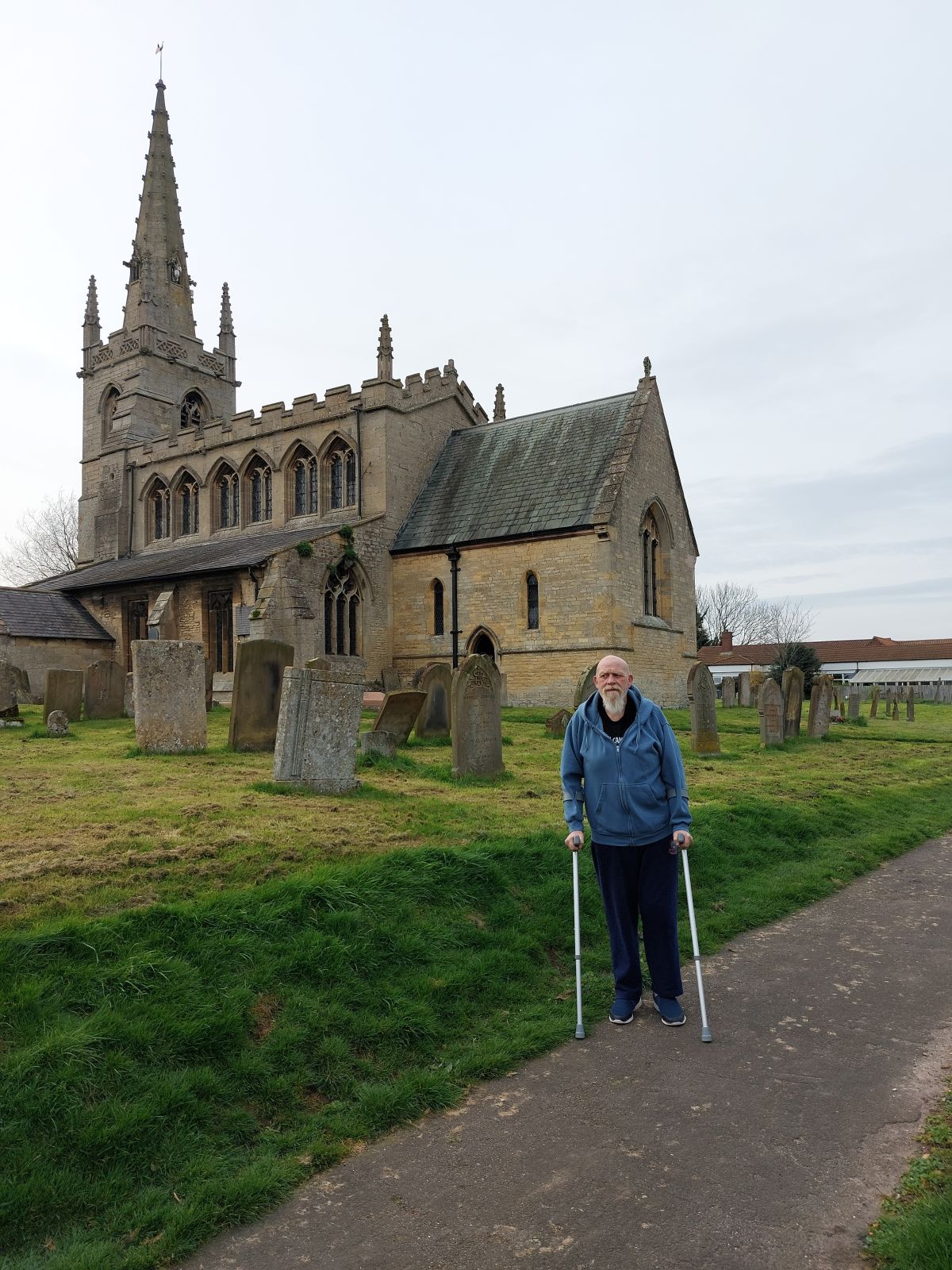ROH Patient Stories - Meet David

Meet David, one of our hip revision replacement patients. He originally had a hip replacement with us in 2008, but came back to the ROH recently for help with a worn out joint.
What is a hip replacement?
A hip replacement, also known as hip arthroplasty, is a surgical procedure where an orthopaedic surgeon removes the damaged or worn-out hip joint and replaces it with an artificial joint.
A hip replacement can help with hip pain and movement as a result of wear and tear of the joint. As we get older most people will have wear and tear arthritis of the hip (osteoarthritis), although some will have rheumatoid arthritis which also involves other joints.
Many factors may contribute to having arthritis - obesity, accidents, vigorous sport or a family history for example. In osteoarthritis, certain changes occur in the joint and these patients may need a hip replacement.
On average, more than 90% of hip replacements are still working well after ten years. Sometimes however, a patient may need to have a revision hip replacement later in their life. This is because wear and loosening of the replaced hip can happen over time.
What is a revision hip replacement?
A revision hip replacement is a complex procedure, where the worn implant is replaced with a new artificial hip-joint. Revision surgery can be more complex because some or all of the components of the original hip replacement may need to be removed and replaced.
16 years after his first hip replacement in 2008 at The Royal Orthopaedic Hospital, David noticed increased stiffness in the joint. It turned out his hip replacement was worn out which meant he needed revision hip surgery. David shares his story:
“I wasn’t nervous before the surgery, as I knew a bit of what to expect, but I was apprehensive. I’m a carer for my wife so it’s important I keep my health. Because of this I knew it was important to make sure I got the most out of it.
When I went in for my first consultation, I was given so much information about the operation, including an app which is part of the JointCare hip and knee replacement programme. The app had absolutely everything you need, and the hip workshop I was invited to ahead of the surgery was brilliant as I got to meet other patients who were also preparing for a hip or knee replacement. I was given information at every stage and everyone I met with from my consultant, Mr Iosif Pagkalos, to the porters to the physios were happy to answer any question I had.
All the staff went above and beyond – the Anaesthetist came and saw me ahead of surgery, explained everything so clearly. When you’re apprehensive it’s easy to miss things when people are talking to you, as your mind drifts, but they really filled me with confidence which relaxed me.
The thing that’s so important is you need to listen to the professionals if they’re giving you advice ahead of surgery – you have to help yourself for them to help you. I needed to lose some weight before surgery and I ended up losing 8 stone over the course of two years. I’m recovering so well now and doing the exercises the physios recommended so easily.
I started doing the exercises 30 days before surgery which is suggested and I think that’s had a big part in my recovery. Four weeks after the operation I was down to one walking stick and now I’m walking on average 6,000 steps a day which I’m really pleased with.
Mr Iosif Pagkalos, Consultant Surgeon, explains a few ways patients can get fit for surgery: “There are a number of things you can do to make sure you are as fit as possible for surgery. It’s really important that patients do take this seriously as it can really help your recovery. If you are overweight for example, this can put greater pressure on your lungs and can impact how your body recovers after anaesthesia so for those patients we do recommend losing weight safely, as well as ensuring getting a balanced diet ahead of the surgery. There are other things you can do to make sure you are as ready as possible for your surgery, including stopping smoking and drinking and doing the exercises suggested by the physiotherapist. These exercises have been suggested to strengthen the muscles around the joint and improve mobility.”









